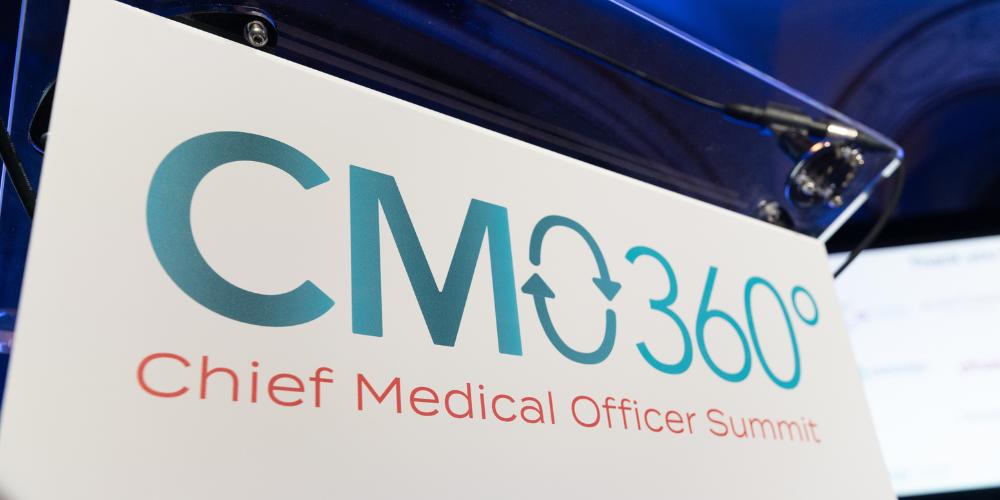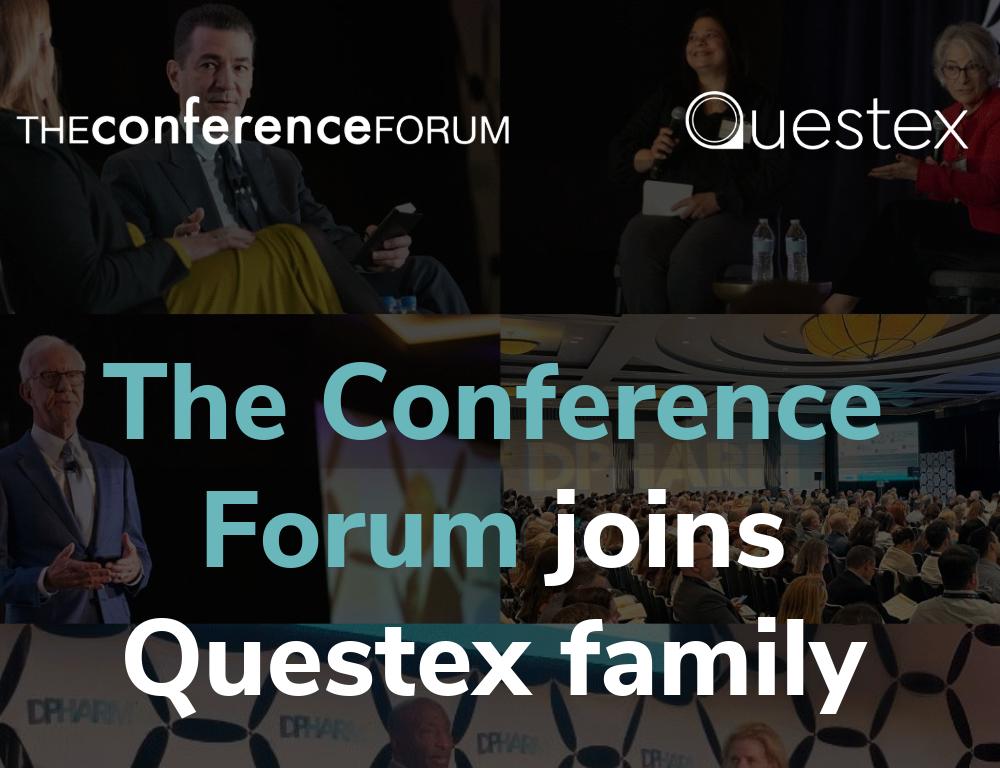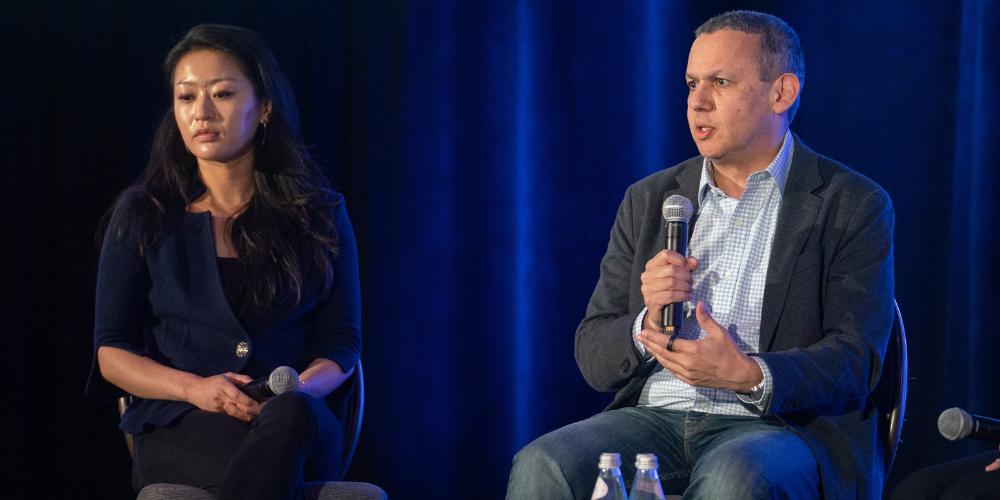
Tell us about Mersana’s partnerships with Janssen, GSK and Merck KGaA.
These pharma companies performed very deep diligence when looking at our technologies in the context of the broader ADC landscape.
We agreed to help Janssen discover up to three candidates using our Dolasynthen platform, a proprietary cytotoxic ADC platform. Merck then agreed to work with us to discover two candidates using our Immunosynthen STING-agonist platform, which takes ADCs out of the classic cytotoxic payloads into the innate immune regulation space. Finally, the third collaboration was an option agreement with GSK for an exclusive license to co-develop and commercialize our XMT-2056 product, which is an Immunosynthen product candidate that we just began investigating in a Phase 1 clinical trial. When you look at these three deals in 2022, they provided recognition of our platforms and also significant capital, with $170 million in total upfront payments, as well as up to $3 billion in potential milestones, in addition to potential royalties on sales.
What is your role as CMO throughout the discussions that lead to these partnerships?
I help to guide which targets fit within our portfolio or the portfolio of our partnering companies. For specific products, I think about how a collaboration can advance and broaden our clinical development program and how certain assets might fit within partnering companies’ programs. As CMO, I pay particular attention to product candidates. As we consider new partnerships, I am involved in virtually all of the business development processes as part of the executive team. From my perspective, it’s a balance between the key business issues and what the partnership offers and also the scientific and clinical data that goes into addressing the questions partners may have about what the platform or product candidate may provide to them. At the end of the day, it really centers around this idea that we can create an opportunity to develop a new product for patients that neither one of us alone could generate. The concept is that we’ve got the platform, they’ve got the target, and we can come together and generate a potential product for patients.
The CMO’s role really depends on the biotech and its stage of evolution. For myself, Mersana has multiple clinical-stage platforms that allow us to discover and develop innovative products. Business development should be thought about as an opportunity to extend our reach to do more than what one company can do on its own, whether it be Mersana or the partner. That’s how we as a biotech have approached it.
"From my perspective, it’s a balance between the key business issues and what the partnership offers and also the scientific and clinical data that goes into addressing the questions partners may have about what the platform or product candidate may provide to them."
How do you get to that level of partnership?
The best way is to foster an exchange of ideas between two companies on how we can advance and benefit from these innovations to strive to treat more patients more effectively. As CMO, I provide the clinical knowledge in relation to vetting the deals, whether it be related to our asset or the landscape in general. That’s useful to guide the diligence process in terms of how we differentiate or meet an unmet need.
How is partnership diligence different from fundraising diligence?
It’s certainly different from the standpoint of thinking about synergies between the two organizations. I address the clinical data in relation to our assets. So if it is a candidate that is intended to address an unmet need, the competitive landscape and how we differentiate is key. If it is a platform deal, how it is differentiated from others and how it could synergize with our potential partners’ target and overcome potential limitations is key.
You also need to recognize that this is a business development opportunity and is distinct from a pure capital-raising exercise. So you are coming with primarily the science and resources. the experience or the assets as opposed to an IPO or financing that focuses on the overall company. The diligence process in business development tends to be very narrowly focused on the platform or product candidate of interest and explores those topics very deeply, while the diligence process for a financing focuses on a broader set of topics but does not necessarily explore all of those topics as deeply.
"The diligence process in business development tends to be very narrowly focused on the platform or product candidate of interest and explores those topics very deeply, while the diligence process for a financing focuses on a broader set of topics but does not necessarily explore all of those topics as deeply."
How do you ensure a successful partnership throughout the partnering process?
It starts with fundamentals and understanding your counterpart’s motivations and then goes into building trust and rapport. These may sound obvious, but they are critical because those relationships are the foundation to effective collaboration.
Then you think about the structural organization builds that can facilitate collaboration: Is it a type of alliance management that can foster information exchange? Is it a joint steering committee? We need to recognize the differences between the organizational designs of large pharma and biotech by implementing a variety of tools that facilitate conversation. We need to bridge the gap between these organizational structures to maximally design together what neither company could do alone.
It’s also ensuring transparency about the progress being made and identifying potential risks. These concepts are critical both in getting a deal confirmed and finalized but also to make progress after execution and, hopefully, hit milestones.
How do you balance the organizational differences of more nimble biotechs and more expansive pharma?
This is where I harken back to those alliance management meetings and establishing that trust in order to align on priorities. You need to ensure you have different levels of connection within the organization. That may be less formal but is a great opportunity to have direct conversations about how to help the teams prioritize. The CMO and executive team can provide value by emphasizing and accelerating some of the discussions and processes that can result in churn at lower levels.
What are some friction points CMOs should be aware of when it comes to partnerships?
It centers around thinking about it as a win-win and ensuring that it is a collaboration and not a competition. There can be challenges along the way from the standpoint of operational aspects and responsibilities as well as if you encounter some kind of delay.
It’s inevitable in drug development that something will happen. When it does, how do you then align on a win-win? And if you can align proactively as opposed to reactively, that can minimize the strain on the relationship as well as reduce any lack of clarity on decision-making. Understanding the escalation process is also extremely helpful. That’s where I pull back to this concept of having both formal alliance management and informal chains between the two companies to be able to streamline the decision-making process.
"It’s inevitable in drug development that something will happen. When it does, how do you then align on a win-win? And if you can align proactively as opposed to reactively, that can minimize the strain on the relationship as well as reduce any lack of clarity on decision-making."
What do the initial partnership discussions and alliance meetings look like?
It actually starts prior to the formal alliance management meeting. It starts from ensuring at the time of the deal that there is a framework for the expectations and recognizing that not all the layers of detail can be explicitly explained. Conceptually, if one has done a good job in relation to that, that is a perfect foundation to have alliance management meetings heading in the same direction.
Then it is back to the fundamentals: It is not a transactional interface but about understanding the individuals and their motivations. And remember, the alliance management team may not be the same team that was involved in the deal negotiations. There is an exercise in building the knowledge base as those alliance management teams are formed. In an optimal scenario, folks should realize that it becomes a second family. It is not one company versus another, but a core group focused on a common cause.
It sounds a lot like what I hear about partnerships with CROs. What are the similarities and differences between partnership with a large pharma and partnership with a CRO?
The similarities are that both sides conceptually and in practice need to think about it as a win. If not, it becomes a lopsided conversation and leads to frustration on both ends.
What may be different for biopharma partnerships is that both parties come into the process offering technological opportunities that neither company alone would likely achieve. CROs bring ideas, services and solutions to the table, but they usually don’t contribute their own technology or innovation.
Anything else?
It’s about recognizing that every partnership should be viewed as a potential win-win: neither one of the companies alone is likely to achieve what together could have great impact on patients and both companies. This mindset balances the business development aspects as well as the clinical implications. As CMOs, we always think about this in that broader context.







